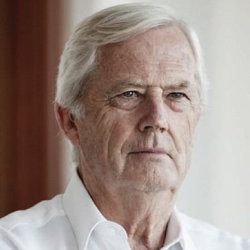John Menadue. Winners in the privatisation of Medibank Pte
October 26, 2014
Many would expect that the 3.8 million members or policy-holders of MBP who are arguably the owners of the company, would be the financial winners in the proposed privatisation.
But not a bit of it. Some of the 3.8 million members will seemingly get some preferential issue of shares. But it will be chicken feed. The two real winners by a country mile will be the numerous advisers to the float, and the senior executives of MBP.
The once-off winners will be the financial and legal advisers to the float. Together with the brokers, underwriters and sub-underwriters, they will make a motza. Our super profitable and large banks will also make money in the marketing of the shares. The fees and charges by all these intermediaries will run into $50 m plus.
The long-term winners will be the senior executives of MBP. They are big fans of privatisation.
There are numerous precedents for the escalation of executive salaries that follow from privatisation. Take the most recent privatisation, Queensland Rail. The rail company was sold in 2010 and the salary of the chief executive increased from $1.1 million to $5.1 million p.a. His job was largely unchanged, but his salary went through the roof.
The managing director of MBP George Savvides is already paid $1.2 million p.a. This is double the salary of our prime minister. Corporate governance analysts estimated that Savvides package will increase to about $5 million p.a. MBPs two other senior executives are now paid $1.85 million p.a. It is estimated that their packages will increase to $3.2 million p.a. each.
The chief executive, Mark Fitzgibbon, of a much smaller private health insurance company, NIB, has a salary of $1.2 million. But MBP is about four times larger than NIB.
In the healthcare industry, the top earner is the chief executive of Ramsay Healthcare, earning $8.3 million p.a.
The senior executives of MBP will be major beneficiaries of privatisation. The 3.8 million policyholders/owners of MBP will get crumbs.
